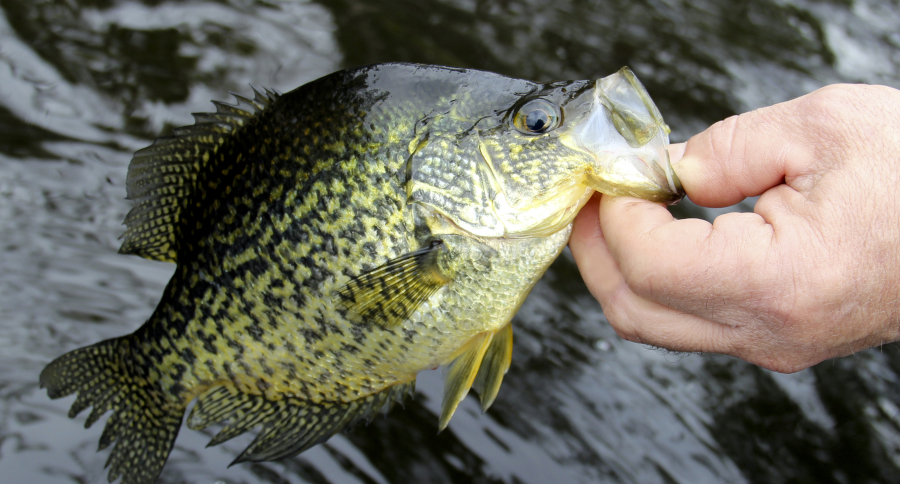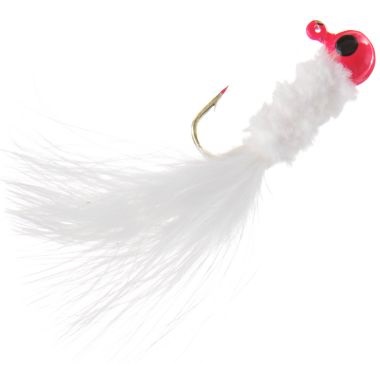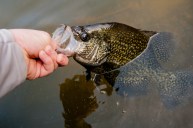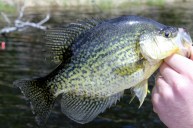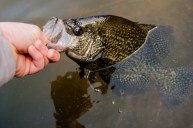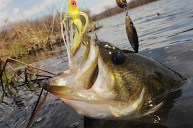These crappie fishing tips will put monster slabs in the boat.
Spring is finally here and so is prime time for crappie fishing. Some of the largest slabs are caught this time of year, making it prime time for anglers to head out and get some fresh air in the warm spring weather. It's also a great way to enjoy some prime fish dinners!
Some anglers struggle to catch crappie the first few times they go out because they can be a tricky game fish. Once you do get on them however, the fishing is often fast and furious. However, we don't want to focus just on spring because these fish can be caught at any time of year.
Today we have some crappie fishing tips for a variety of seasons and situations that are sure to put fish in the boat consistently.
Equipment and lures for crappie
If you've never fished for crappie before, don't worry, you don't need anything fancy. Chances are you already own a light fishing rod with a spinning reel for panfish. Most anglers use a four to ten-pound test fishing line. Keep in mind that crappie can be a bit spooky when it comes to line. If you're fishing a clear water lake that receives a lot of pressure, use a light line that is less noticeable like monofilament.
It's about finding a good balance because crappie also like to hang out in brush, which means the possibility of losing lures in snags. Weigh the pros and cons of strength vs finesse carefully. Ideally, you should have a few different setups to find out which will work the best. Personally, I like lighter setups for more bites and a better fight at the expense of a few lures.
Speaking of lures, you're going to be looking at an assortment of jig heads for the most part. Light sizes of 1/32, 1/16 or 1/8-ounce jigs are best. Most manufacturers sell specialty crappie jigs. They usually have a soft plastic grub body and a curly-tail or hair tail. They're quite cheap, so it's worth picking up different sizes and colors to find what works best for your waters.
Crappie can also be caught on small crankbaits, spinnerbaits and jigging spoons when conditions are right. Don't forget about live bait. Crappie are highly susceptible to fishing minnows under slip bobbers.
If you're going to get serious about fishing for papermouths, that's when you can move beyond the usual ultralight setups and start looking at stuff like spider rigging, which uses multiple rods of greater lengths to find fish and patterns quickly.
Crappie habits late winter and spring
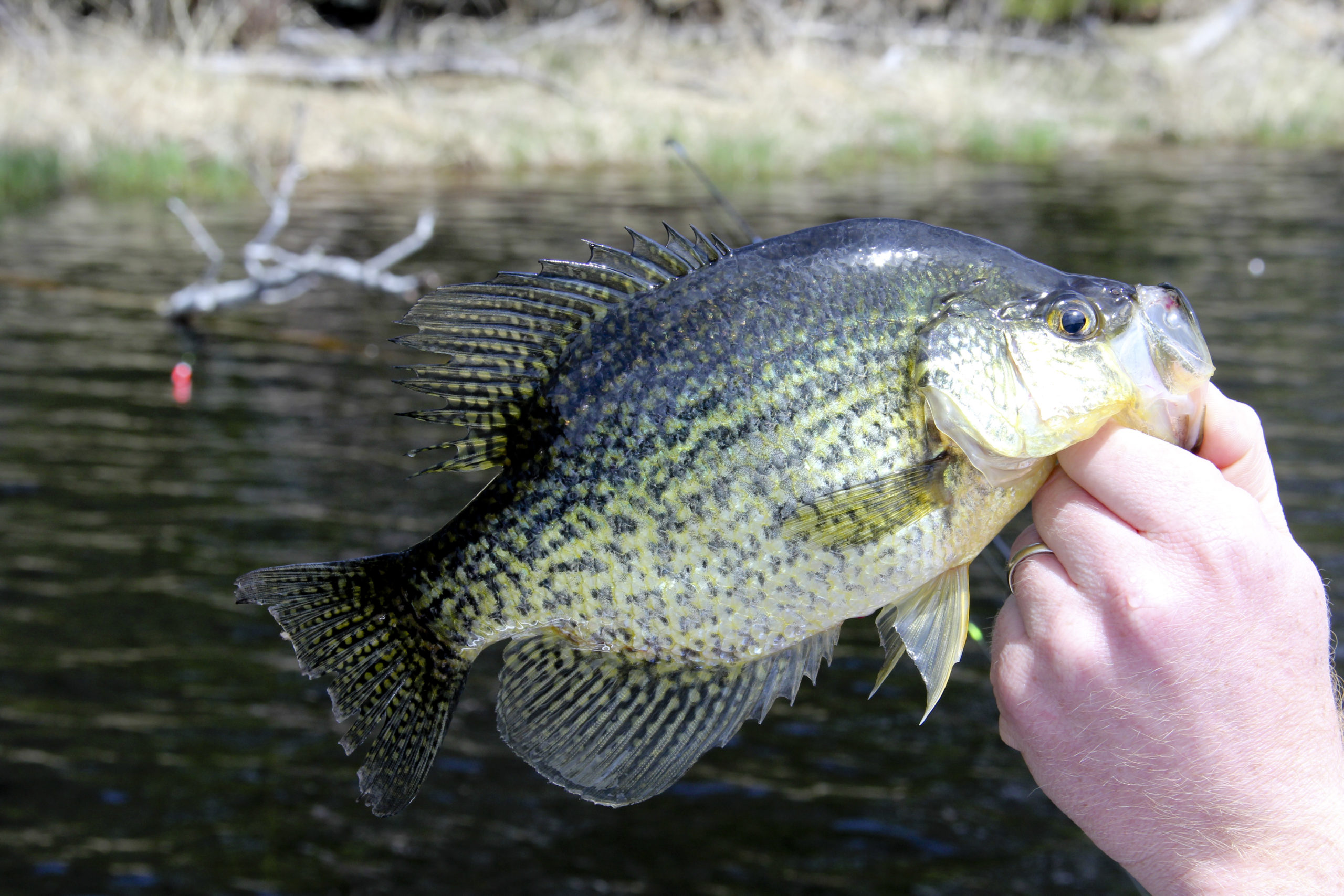
The two primary species most anglers know are black crappies and white crappies. However, there isn't a whole lot of differences between them as far as habits go or how you fish for them. That's a plus for anglers because it means you can take more of a catch-all approach to targeting them than you might for say largemouth and smallmouth bass.
Spring is generally the most popular time to target crappie because that covers the pre-spawn and spawning period. The fish are usually hungry and feeding heavily. It is also generally when the fish at their heaviest, so it's prime time if you're looking for a trophy fish.
Crappies are found at different depths depending on the time of year. In the winter and early spring, you're likely to find them suspended in deeper water. This is when you're likely to have the most luck with vertical jigging. Use your electronics to locate bunches of fish suspended on deep brush piles, or if none of those are available on the water you're fishing, deep weed lines.
As the water temperature rises, and the fish go into pre-spawn mode start your search for crappies in about 10 feet of water. Woork your way shallower as the temperatures rise. Like many other species, crappie spawn behavior is predicated on temperatures. Most crappie pros agree, once the water gets around that 50-degree mark, it's time to start seriously fishing. Most spawning occurs between 50 and 60 degrees.
Finding the crappies is usually the biggest challenge, especially if they're still suspended in deep water. Trolling or using spider rigs with multiple baits and lures is a good way to search likely-looking areas in the spring.
However, you should also consult with topographic lake maps, satellite imagery and your fish finder to aid in this aspect of the hunt. Remember that crappie prefer wood brush and cover over weeds. If you can find that, it's likely you'll find the fish faster.
You'll want to adjust your lure presentation as things warm up. Start with a more subtle presentation when temperatures are colder and gradually speed up your retrieves as the water warms and the fish become more aggressive. The power of observation can be a major weapon during this time period too. For instance, are you noticing a lot of aquatic insects during the pre-spawn period? If so, small soft plastic jigs, grubs and tubes are likely to be more effective. If you're seeing baitfish, consider live bait or a variety of lures specifically designed to imitate minnows.
Once the fish are in shallow water spawning, they can often be sight-fished with jigs or live minnows. Make sure you have a quality pair of polarized glasses. The male fish can often take on a very dark or even black appearance that makes them harder to spot against a dark lake bottom.
Think of spawning crappie like you would fishing for largemouths. They aren't striking to feed. They're striking because they perceive your lure as a threat. Many pro crappie anglers go for brighter color patterns and more aggressive retrieves during this time than any other time of year because they're trying to trigger an angry response from the fish.
Summer, fall and winter
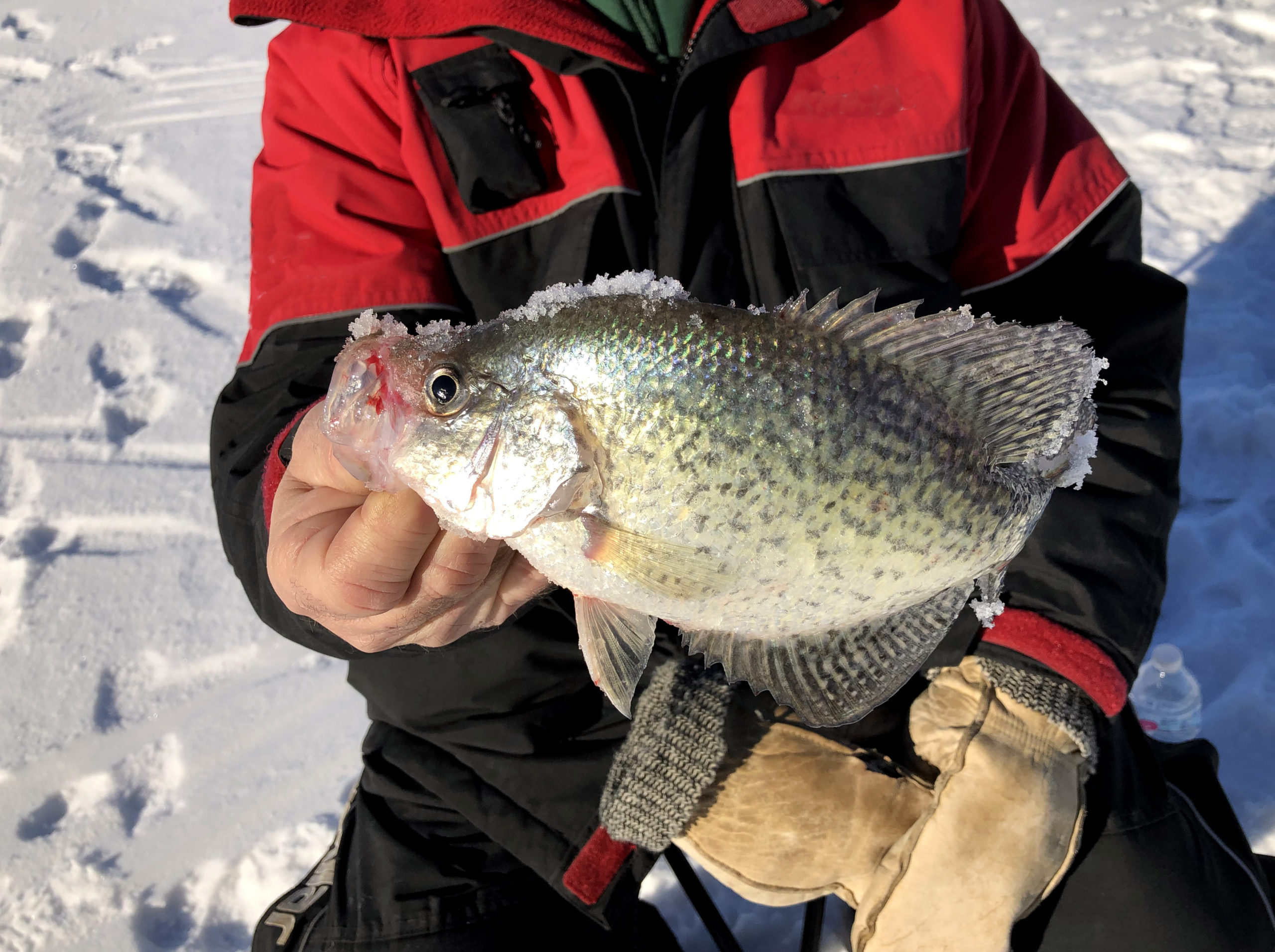
Crappie can be a bit frustrating in the spring because the depth they're hanging out can vary wildly from day to day. That's not the case during the summer. Crappies will almost universally go back to depths of 10-15 feet in the summer and they'll stay there until temperatures start dropping again. They're a little bit harder to catch in warmer months just because of the difficulty in locating them. You may have to spend a while trolling before you locate the one brush pile they like to hang out on.
Consult with your electronics in the warmer months to find these hidden locations and mark them with your phone or a GPS unit so you can return to them year after year. For bait, try jigs and spoons. Experiment with depth until you can get the finicky fish to bite. If they're being stubborn, it might be time to break out the minnows under slip bobbers. The one positive about summer is that crappie get little attention because all the other anglers are targeting bass and sunfish.
Once fall arrives, crappie will start transitioning to even greater depths of 20-30 feet or more. Like many types of fishing, you'll want to start downsizing your baits slightly. Fall is another good time of year to try search techniques like spider rigs and trolling. Whatever technique you use, just remember to slow your presentation. Use your trolling motor to move slowly, but deliberately. The fish are going to start becoming more lethargic to save energy and they're not going to be any mood to chase a jig or spinner being ripped through the water at a rapid rate.
When you do discover a good school of fish, you can switch to a vertical jigging presentation to likely pull multiple fish out of the same location. Pay close attention to lure depth and where the fish are striking the bait. If you find a good pattern, you may be able to time each strike right before it happens. Remember to change up color and size presentation if you see the fish on your electronics and they're not biting. Crappie can be frustrating because their food preference seems to change at the drop of a hat. When all else fails, try suspending or tipping your jig with a minnow.
In the winter months ice fishing does make staying on top of the fish easier, but feeding periods are often shorter. If you miss an early morning or afternoon bite, you probably won't catch much the rest of the day. A good flasher is a must on deeper lakes where the crappie may be holding 30-40 feet deep. You can watch a crappie's reaction to your bait or lure in real time with a flasher and adjust accordingly.
One thing to keep in mind with both fall and winter fishing is the depth of your presentation. By nature's design, a crappie is built with an upturned mouth and eyes that are suited to striking prey above it. That means you want your presentation to be above the fish slightly or they may never see it.
When the fish are eyeing but not striking, give your jig, spoon or minnow a little extra tip, flexing the rod tip. Alternatively, try lifting the bait higher. Sometimes crappies just need a little extra incentive to strike and if they think this potential prey is escaping, that's all it takes to coax a bite.
Final thoughts on crappie
Don't forget to "match the hatch." We know this tip is most often used for species like trout, but it applies to all game fish. You need to be observant of your natural surroundings to see what forage items are available for the crappie. If you're seeing a lot of one-inch silver-colored baitfish, your presentation should mimic that size and color.
Don't be afraid to experiment and don't be surprised to see crappie habits change on the fly. This species has a reputation for striking one color of lure one day and then ignoring it completely the next. We're not sure what goes on in a crappie's mind, but their choosy nature means you need to have a variety of lure sizes, colors and varieties on hand every time you hit the water if you want to be successful.
For our final tip, once you locate some crappies, you need to stay on them. This is a schooling species. You'll rarely catch a lone crappie. Where there is one, the others are nearby. Sometimes you can fill up a whole afternoon of fun sitting on one brush pile. You'll know you've hit the perfect pattern and spot when you can't keep them off your line.
By utilizing these tips, you should be having plenty of successful fish dinners with tasty crappie this year. Good luck to all the anglers out there!
For more outdoor content from Travis Smola, be sure to follow him on Twitter and check out his Geocaching and Outdoors with Travis YouTube channels.
NEXT: HERE'S THE NEW WORLD RECORD BLACK CRAPPIE THAT WAS CAUGHT IN TENNESSEE
WATCH
